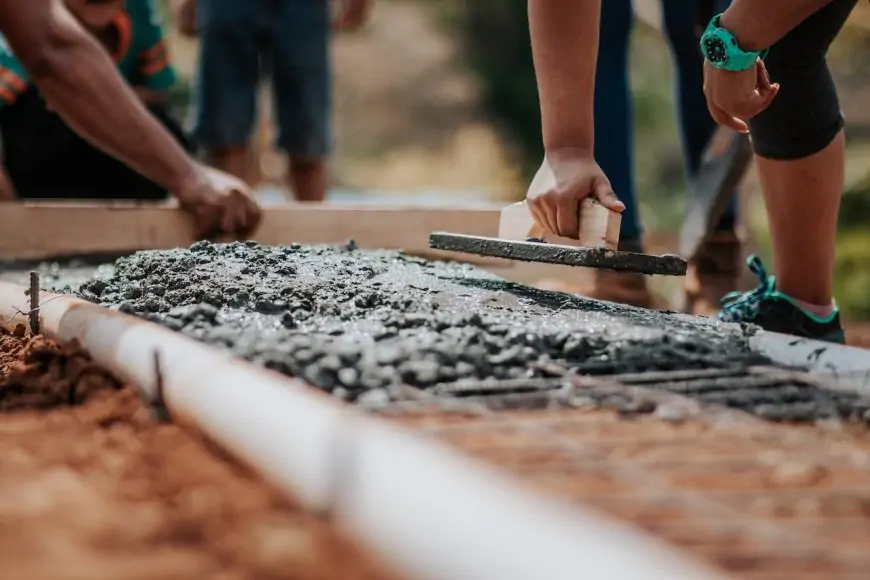In construction projects, the choice of cement makes a lot of difference. Two common options that often find themselves at the focal point of this debate are grey cement or Ordinary Portland Cement and Portland Pozzolana Cement. Each comes with its unique set of characteristics, applications, and advantages.
Knowing about them is essential when choosing between PPC and grey cement. Such knowledge helps you understand what sets the two apart and when to use each for the best results in your construction projects.
What is grey cement?
Grey cement or OPC forms the core of the construction industry. It is what most of us visualise when we think of cement and what cement is supposed to do.Here are other aspects that explain grey cement's foundation better:
- Composition
Grey cement primarily comprises clinker, gypsum, and small numberof other materials. It gets its name from the greyish colour it usually possesses. The colour is a result of the iron content in the raw materials used in its production.
- Strength
Grey cement boasts exceptional compressive strength. This makes it ideal for most construction applications, including residential buildings, roads, bridges, and more. Its ability to endure heavy loads and offer stability to structures is also unmatched.
- Applications
Grey cement's versatility allows it to be used in various construction projects. Whether you are building a small home or a towering skyscraper, it can easily be the go-to optiongiven its foundational role.
- Setting Time
This type of cement has a relatively fast setting time, which can be an advantage for projects that need quick turnaround times.
What is PPC cement?
PPC is a relatively newer entrant to the cement world. However, it is quickly gaining popularity for its unique properties, especially in sustainable construction. Here are other aspects that compel homeowners, contractors and builders to buy PPC cement:
- Composition
PPC cement is a blend of clinker, pozzolanic materials such as fly ash, and gypsum. The addition of pozzolana enhances its performance and sustainability.
- Strength
While PPC cement may have slightly lower initial strength than grey cement, it compensates with long-term strength. It is known for its resistance to harsh environmental conditions. Therefore, it proves to be a reliable choice for structures that need to withstand harsh conditions.
- Applications
PPC cement is especially suitable for projects where durability and resistance to chemical attacks are crucial. It is often used in marine structures, sewage systems, and regions with aggressive soil conditions.
- Sustainability
A most significant advantage of PPC cement is its eco-friendliness. By utilising industrial waste like fly ash, PPC reduces construction's carbon footprint. This makes it an excellent choice for green building practices.
- Heat of hydration
PPC cement generates less heat during hydration, which is beneficial in reducing the risk of thermal cracking in massive concrete structures.
Choosing between grey cement and PPC cement
Now that we have established the differences between grey cement and PPC cement let us consider how to choose between them for your construction projects:
- Project requirements
The specific requirements of your project should guide your choice. Grey cement is ideal if you need quick setting and high early strength. On the other hand, PPC cement is better for projects in aggressive environmental conditions or where long-term durability is a priority.
- Environmental considerations
If sustainability and reducing your project's environmental impact are important, PPC cement aligns with these goals because it uses industrial byproducts like fly ash.
- Cost
The cost of cement can be a significant factor in project budgets. Grey cement is often more economical. However, consider the long-term benefits of PPC cement when evaluating costs.
- Local availability
Check the availability of both types in your region. In some areas, one may be more prevalent than the other.
- Consultation
For important projects, it is advisable to consult with structural engineers or architects who can offer proper guidance based on the specific demands of your construction.
Tips for choosing a reliable cement manufacturer
Selecting a reliable cement manufacturer is crucial to ensure the success and durability of your construction projects. With numerous options available, here are valuable tips to help you decide:
- Brand reputation & history
Begin by researching the reputation and history of cement manufacturers. Established and renowned brands like JK Super Cement have a track record of producing quality products. Read customer feedback and reviews to gauge their reliability.
- Certification &compliance
Make sure that the manufacturer's products are certified by the Bureau of Indian Standards and adhere to the relevant IS codes. This certification guarantees that the cement meets the national quality standards.
- Product range
Choose a manufacturer that offers a comprehensive range of cement types and grades. Different construction projects require specific types of cement, so having options is essential.
- Quality control
Enquire about the manufacturer's quality control procedures. Reliable manufacturers implement stringent quality control measures throughout production to ensure consistency and reliability.
- Production facilities
Visit or research the manufacturer's production facilities. Modern and well-maintained facilities are more likely to produce high-quality cement. The manufacturing site's cleanliness and organisation can indicate the company's commitment to quality.
- Customer service
Assess the responsiveness and professionalism of the manufacturer's customer service. Prompt communication and a willingness to address customer inquiries and concerns are indicators of reliability.
- Previous projects
Enquire about the manufacturer's involvement in notable construction projects. Their association with significant and successful projects can indicate reliability and trustworthiness.
- Environmental initiatives
Consider the manufacturer's commitment to sustainability and environmental responsibility. Manufacturers implementing eco-friendly practices, such as using alternative fuels or reducing carbon emissions, demonstrate a forward-thinking approach.
Conclusion
In the realm of construction, the choice between grey cement and PPC cement is not only ab out black and white. Each serves a distinct purpose and brings its unique strengths to the table. Understanding the differences between these cements empowers you to make an informed choice that ensures your project's success and longevity.









